Titans!: A First Impression
- DankestDad

- Jul 7, 2023
- 10 min read
Introduction
As this week draws to a close, we now have seen all of the Titans, the titular legendaries from Hearthstone’s next expansion. While there are still many more cards to come, it still is a good idea to get familiar with these cards because, unsurprisingly, we will be seeing a lot of them once August comes around. Like the Colossals from Voyage to the Sunken City, the Titans are very aggressively costed with powerful effects, and at this point they seem likely to be even more ubiquitous than their undersea counterparts. In this article, I will give an overview of the Titan for each class and look at some potential synergies in the current card pool, and suggest some cards to look out for in the new set that might maximize their impact. If you need a primer on how the Titan keyword works, this blog post from the dev team gives a thorough explanation of it along with some relevant interactions. So, without further ado, let’s get to it.
Rogue: V-07-TR-ON Prime
Despite what V-07-TR-ON Prime’s flavor text implies, Mimiron was not quite able to mimic the power of the Titans with his latest creation. V-07-TR-ON Prime comes up just a bit short in almost all respects without the additional context of the full set reveal. Full Power! leads to some unseemly comparisons with Priest’s Cathedral of Atonement, and while Attach the Cannons! has some good numbers, the random nature of the effect is inconsistent and makes this ability difficult to choose in contested board states. Maximize Defenses! is probably the worst of all 3, and although it protects V-07-TR-ON Prime it does not do anything to stave off opposing pressure or swing the board in your favor. This Titan is most impacted by its inability to attack right away, and it almost is better looked at as a dormant 6/11 that draws 2 cards, gives +3/+6 in stats, and deals 8 random damage. While there are worse cards, but there also are several better ones, and without a lot of help V-07-TR-ON Prime is going to be left in the dust by miracle and other more successful Rogue strategies. Frequency Oscillator and Zilliax are currently the best synergies with this card in Standard, and until more mechs come our way in Titans!, it is difficult to figure out where to put this oddball legendary.
Mage: Norgannon
At face value, Norgannon appears to be one of the weaker Titans. His statline is not the most impressive for a 6 mana minion, and each of the effects is individually underwhelming. His doubling effect, however, is one of the most powerful lines of text on any Titan, and in conjunction with how Titans interact with copying, Norgannon can get out of hand very quickly. The key play pattern looks like using Ancient Knowledge to limit your opponent’s ability to react to Norgannon, then following up with Cover Artist or Reverberations to copy Norgannon the following turn after it has used Unlimited Potential to put some secrets into play. This will set you up for the full 20 damage blast from Progenitor’s power, sometimes even twice on turn. The foil to this strategy is often for your opponent to be ahead on board going into turn 6, but a timely Deathborne can punish this plan, putting your enemies into a frustrating Catch-22. Volume Up and Queen Azshara are cards that already slot into the Spooky Mage package that work great with Norgannon, and if more cheap removal or freeze effects come into Standard with Titans!, then Norgannon will be a force to be reckoned with in the new meta.
Warlock: Sargeras, The Destroyer
For fellow lovers of infinite value, Sargeras is going to be the prime Titan to consider. Clocking in at a hefty 9 mana, this card is expensive, but more than worth the effort if you can stick it. Summoning The Twisting Nether, a portal reminiscent of the reward from Lakkari Sacrifice, Sargeras generates 2 3/2 imps at the end of each turn, eventually overwhelming opposing control decks. He also can swing the board in other ways: To the Void! can remove all other minions from the board, and Inferno! can create a large swing in your favor, putting a whopping 5 minions with 24/28 of stats into play. Legion Invasion! is the choice for the long game, giving the future demons summoned by the portal +2 health and most notably, Taunt, making racing past them to end the game a much more difficult proposition. Offhand, cards like Voidcaller and Dirge of Despair would seem like natural pairings with Sargeras, but this is actually a trap. If the portal is not summoned by the Battlecry, then Sargeras is stuck wasting turns on the board to cycle through his abilities before he can finally attack. Instead, use cards like Defile to draw the game out, and, if Sargeras is your most expensive minion, an early Symphony of Sins can spell disaster for your opponent if you draw your Sargeras with Movement of Pride. Of course, Warlock also has access to Reverberations, which is another great pairing with Sargeras and can act as removal for opposing Titans in a pinch. As for other new cards, Warlock will be most interested in finding inexpensive single target removal to go with its board clears, allowing the class to survive long enough to bring Sargeras online.
Demon Hunter: Argus, the Emerald Star
A whole Tavern Brawl in one card? Sign me up! With its unique aura effect, Argus can make minion-based combat a cinch for Demon Hunter, allowing the class to fight for board even more ruthlessly than before. With Argunite Army as a baseline, Argus can fill your board with massive stats immediately on curve and potentially allow some of the tokens to win favorable trades, since 2 will spawn on his left and gain Rush. Show of Force can enable some gnarly combo setups, which thankfully will punch a bit less hard after Lady S’theno’s nerf during Festival of Legends. Finally, Crystal Carving does not seem as impactful as the other abilities, but it is still a solid value option if Argus can stick on the board. So far, it seems like Argus is an inclusion in most Demon Hunter decks, but I would argue that Outcast DH is its true home. While expensive cards are usually not a good choice in Outcast decks, Argus might be the exception, with Show of Force particularly pulling its weight by discounting Wretched Exile and Fierce Outsider to set up reload turns. The aura effect is also excellent with Rush minions like Vengeful Walloper, and sometimes a Tough Crowd can send Argus back to start off another value chain against decks like Control Priest and Blood DK that typically give Outcast DH trouble. All in all, Argus doesn’t need much additional support to be a great card, but more Rush minions to work alongside Rush the Stage and Argus’s Lifesteal effect couldn’t hurt.
Paladin: Amitus, the Peacekeeper
Reminiscent of Sunkeeper Tarim, Amitus is another card that excels at both neutralizing enemy boards while pressing your existing advantage. She is an absolute headache for decks that lack hard removal, and until she leaves the board your minions will dominate any trades into the opposition. Pacified can instantly turn a threatening enemy board into the equivalent of Frostwolf Grunts, punishing classes that build tall boards like Rogue and Warrior. On the other side of this, Empowered gives the rest of your board a solid buff, giving your minions the ability to push damage or trade into the enemy board. The +2 health from this buff is almost like a Divine Shield while Amitus is in play, making the buff even stronger than it appears at first glance. Reinforced is interesting because, while it would not be outstanding strong in a traditional Pure Paladin list, it could be great in Big Paladin alongside Kangor, Dancing King and Annoy-o-Lord, and, if the card pool becomes sufficient to support Pure Big Paladin, alongside The Countess. Lead Dancer also can summon Amitus from from your deck, which is another nice synergy, and, if more support for Big Paladin comes along, Amitus could find even more decks than just slotting cleanly into Pure Paladin as it would now.
Warrior: Khaz'goroth
Khaz’goroth may not be the splashy control win condition that Warrior fans were expecting, but that doesn’t mean that he is weak by any means. At only 6 mana, he comes online immediately, and, as has been a common theme of the Titans we saw so far, is a master of minion-to-minion combat. Heart of Flame leads to a great board swing, often removing a minion, leaving a 4/9 behind, and gaining some armor to disincentivize racing. Titanforge can be a great value option, and while Tempering is the most situational it still can be great for removing a singular large minion or making Khaz’goroth more threatening. One part of this card that is not obvious on a first reading is that Khaz’goroth is Immune for the entire turn, not just for the attack granted by its ability. This gives an incidental synergy with cards like Riot! And Bladestorm in Standard and Provoke in other formats. Blackrock n’ Roll, Anima Extractor, and other handbuff effects also support Khaz’goroth well, and in the future, more powerful weapons that fall later in the curve could be a great asset in a Khaz’goroth deck.
Death Knight: The Primus
Sure he isn’t splashy, but The Primus is exactly what a slower Death Knight deck wants, generating massive value while meaningfully impacting the board. With no runes, he can see play in any Death Knight archetype, but Blood and the elusive Rainbow seem like the more fitting choices. Runes of Blood is a great option for removing a large minion while making The Primus himself very difficult to remove. Runes of the Unholy creates a very sticky board, and Runes of Frost can synergize very well with Howling Blast and Remorseless Winter, and it even gives you a chance to discover the card because of The Primus’s aura effect. Like Argus, this card doesn’t need much help to shine, but that doesn’t mean there are no synergies beyond the healing and board clears required to protect this minion. Mosh Pit and Unholy Frenzy provide novel methods of reviving The Primus and further snowballing its advantage in a Rainbow build, but outside of that the card is most enabled by cards like Blood Boil and Corpse Explosion. More powerful 2 Rune cards and Spell Damage synergies are worth looking out for, but even if they aren’t a part of Titans!, The Primus will still be closing the door at the top of many a Death Knight curve.
Shaman: Golganneth, the Thunderer
Golganneth, the Thunderer is efficiency incarnate, and takes the Shaman class back to its roots of doing a little bit of everything. Immediately, Roaring Oceans leaps out as an incredibly powerful effect, arguably worth 4 or 5 mana without considering the Titan that comes alongside it. Lord of Skies also is a great option for clearing a large minion, and, in a matchup against slower decks, Shargahn’s Wrath can set up a quick lethal alongside Golganneth’s excellent aura effect. Alongside Inzah, Jazz Bass, and Criminal Lineup, Golganneth also represents a large immediate swing in the late game, threatening multiple triggers of Roaring Oceans while providing its own setup with Shargahn’s Wrath if necessary. Golganneth also passively reduces the necessary discount, allowing this combo to be executed for a mere 10 mana with only the Battlecry from Inzah. If the cards fall in your favor, Jazz Bass can even facilitate this combo on curve, leaving aggro decks in the dust and control decks faced with a full board and hand on the Shaman’s side. This represents a huge turning point for the class, and with a few more Overload tools or ways to tutor Golganneth consistently, Shaman could bring about combo’s return in Standard behind the power of its new Titan.
Druid: Eonar, the Life-Binder
Fittingly, Druid has received the most expensive Titan so far, but she more than justifies her expensive price tag. With Flourish allowing you to keep your plays going and the aura effect rewarding the use of her abilities, Eonar is arguably the Titan that benefits most from copy effects. By using Cover Artist immediately after refreshing your mana, you can either heal to full with Bountiful Harvest or draw a full hand using Spontaneous Growth with mana to spare, putting several Taunt minions into play at the same time to protect Eonar and your hero. Of course, sometimes Eonar won’t have to wait for turn 10, and cards like Summer Flowerchild, Nourish, and even Hedge Maze can help you get there sooner. At the moment, Druid has all of the cards it needs to cheat Eonar out early and often, but survivability is always the name of the game for a ramp deck with powerful top end. A card like Scale of Onyxia or Spreading Plague could be what the doctor ordered for Druid if the new combo of Embrace of Nature and Drum Circle is not up to task, but already Druid has fantastic tools to enable Eonar and play into its Titan’s strengths.
Hunter: Aggramar, the Avenger
Unlike what some songs might suggest, it is in fact easy being green, and Aggramar is a testament to that. If a 3/7 minion alongside a 3/3 weapon weren’t enough for you at 6 mana, then this Titan’s abilities will surely change your mind. Commanding Presence further extends your board pressure, adding a 3/3 taunt immediately and representing more value of off weapon swings. Swift Slash is the choice for face connoisseurs, giving Taeshalach Immune while attack alongside the ever more important +2 damage, representing a whopping 15 damage for 6 mana if it is chosen immediately. Finally, Maintain Order is a solid option for refueling and finding a topdeck King Krush or Hollow Hound when in a bind. While this card will be played in every Hunter deck imaginable once it is released, there are a few cute card choices that lean further into maximizing Aggramar, like Air Guitarist and even Shockspitter. Ultimately, though, the best synergy with damage is more damage, and if you take the most efficient early minions and burn from the new set and pair them with Hunter’s existing tools, Aggramar will be at his best.
Priest: Aman’Thul
Last and certainly not the least, Aman’Thul more than lives up to his title as the leader of the Titans. Strike from History is borderline obscene, and developing a 3/10, removing 2 minions, and discovering a Legendary minion is backbreaking against every current control deck. Vision of Heroes provides a solid tempo option on an empty board, and Shape the Stars can allow you to double down on your own board lead or punish an enemy Rush minion with a slightly larger copy of it. Alongside the Discovers this card generates with each effect, Aman’Thul will be impossible to answer one-for-one except by an opposing Aman’Thul, making the only reasonable choice to try and get under this card before it can take over the game. IF one Aman’Thul wasn’t enough, then Power Chord: Synchronize can continue to pile on the value, and, if Love Everlasting is in effect, can do so on curve. Switcheroo also gives minion-light Priest decks a way to find this card quickly, making the value snowball nearly as consistent as it is powerful. It also is worth mentioning that the Legendaries Aman’Thul discovers can be from any class in Standard, making them very difficult for opponents to plan around and taking away the option to play for a consistent endgame. With Priest already the premier control class in Standard, this Titan already is poised to thrive with no other cards from the new set, and things can only go up from here. This Titan really does everything Priest would like it to, and I expect it to be the most defining card for Control Priest until its time in Standard ends.
-DankestDad
Twitter: @DadDankest
Discord: dankestdad
Which Titan are you the most excited to try out?
Let us know on https://www. twitter.com/AFlightGaming
Or join our discord and chat about Hearthstone and more! https://discord.gg/8HESzK9





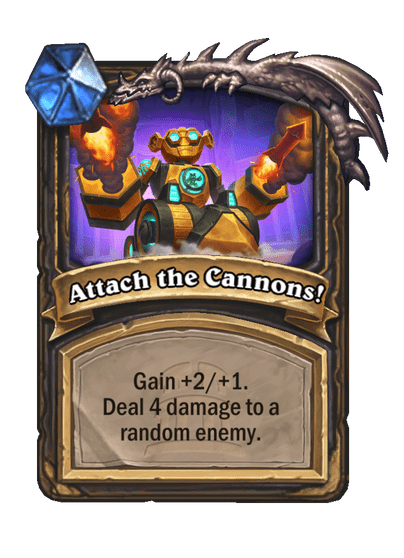
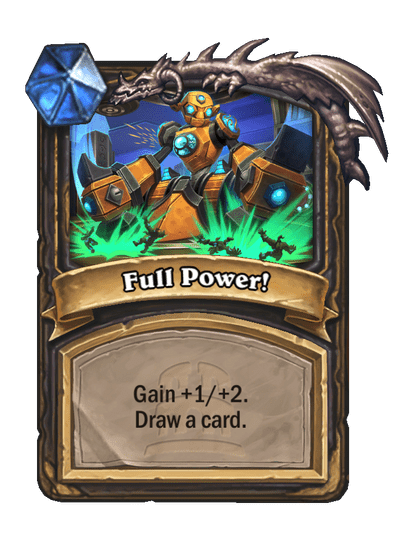
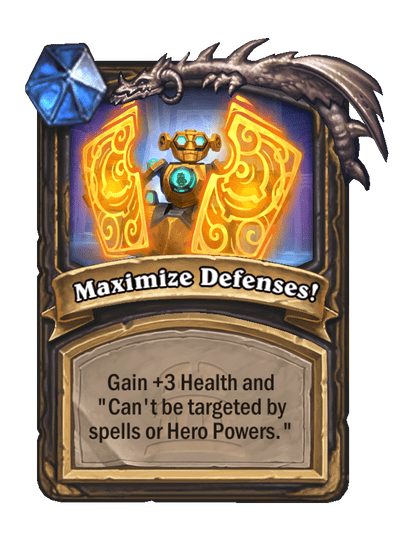

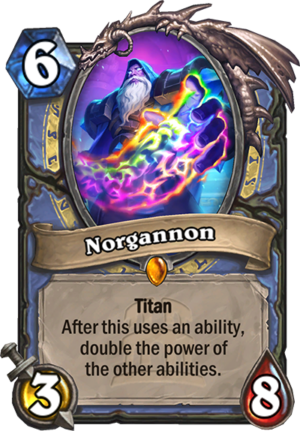

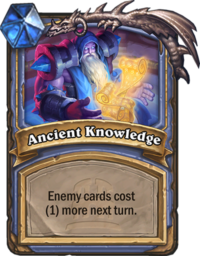

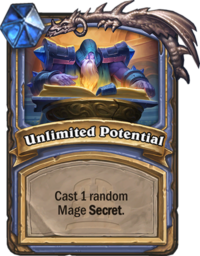

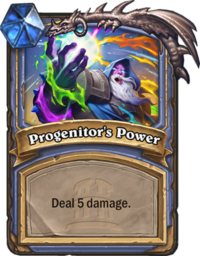



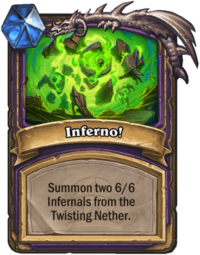

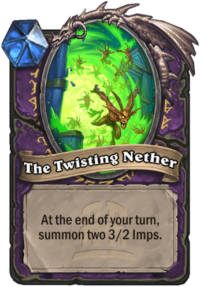

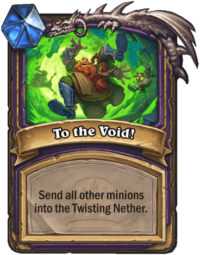

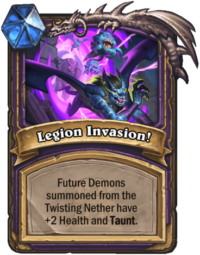

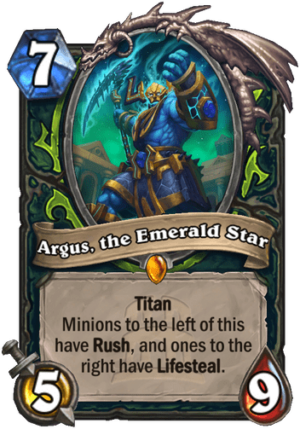

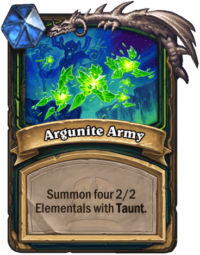

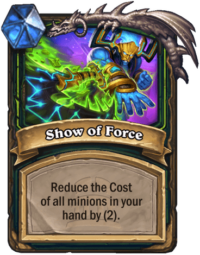

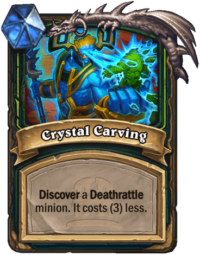

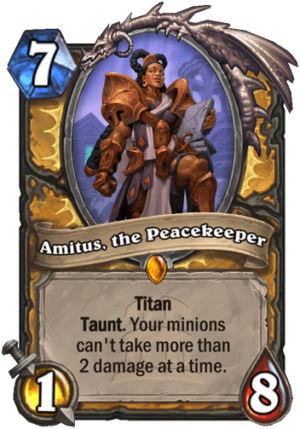

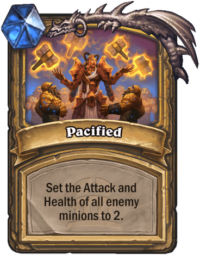

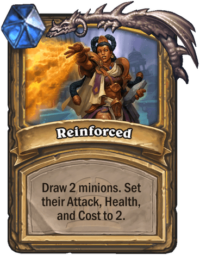

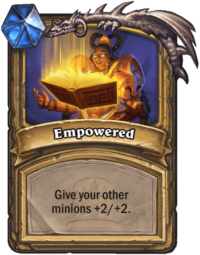

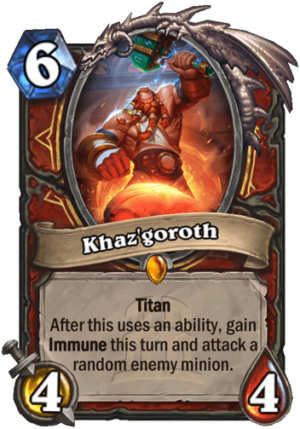

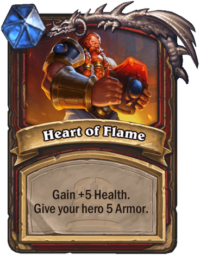

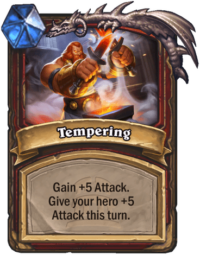

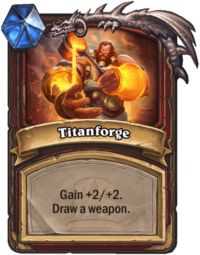

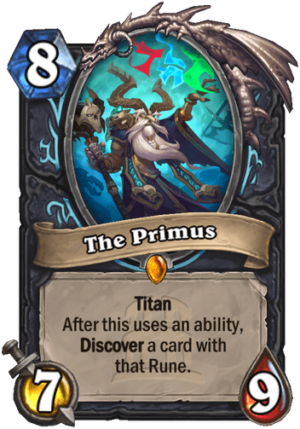
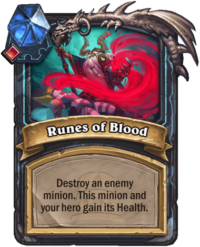
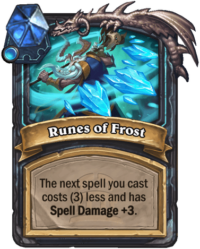
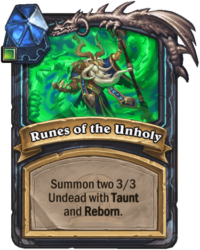

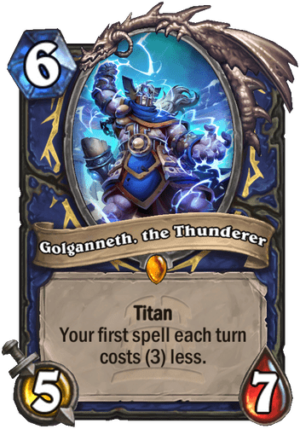

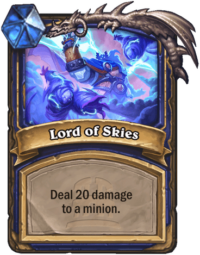

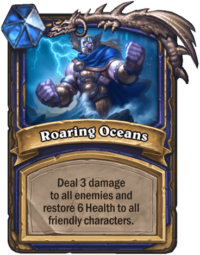

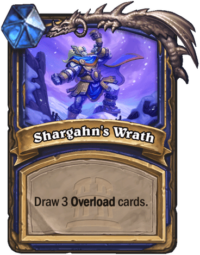

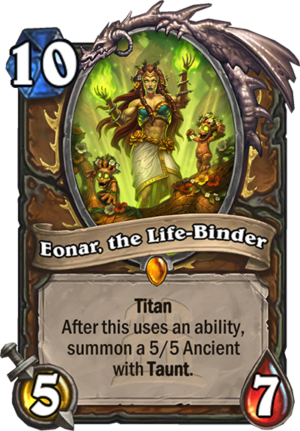

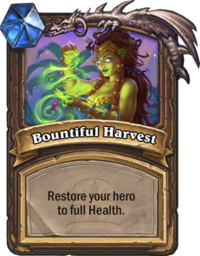

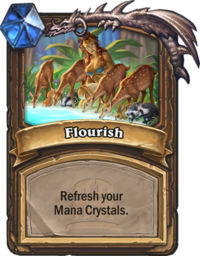

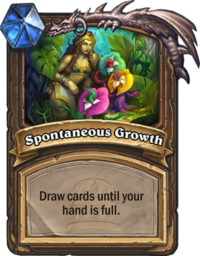



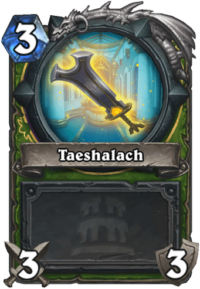

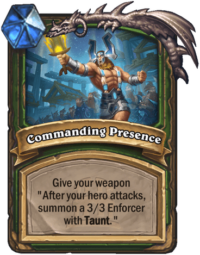

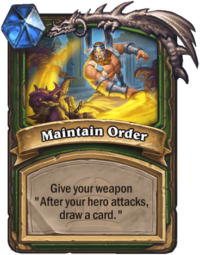

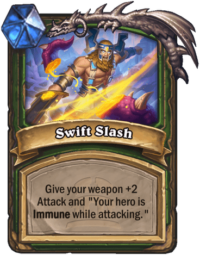

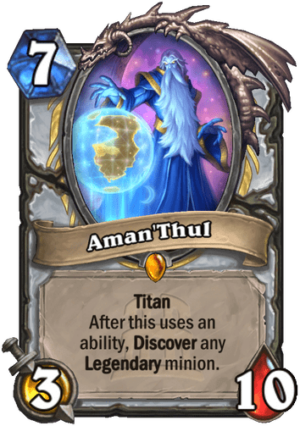

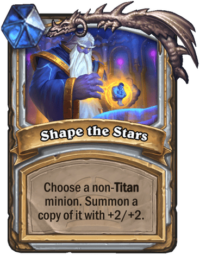

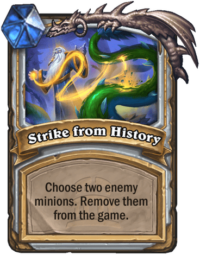

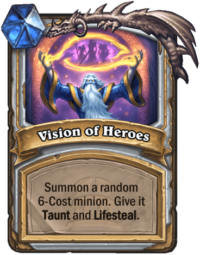



Comments